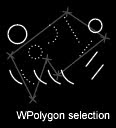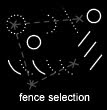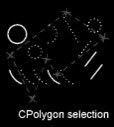There are three major activities an operator performs while drafting in AutoCAD
1. Drawing – Line, Arc, Polyline, Circle, Text, Dimension etc.
3. Modifying – Erase, Move, Copy, Rotate, Trim, Offset etc.
So what is the SECOND activity?
It is ‘Selecting’ which is always taken as granted and never emphasized neither in training sessions of any sort nor in practical applications. Let’s excel in the process of ‘selecting objects’ which is the highest and most common AutoCAD prompt received by almost every user around the world in a typical CAD session.
Do you know –? (TRIVIA)
- An average user of AutoCAD receives ‘select object’ prompt at least 275 times in an hour session
- An average user spends more than 35% of his/her CAD session time on selecting objects
- An average user hardly uses the filter and quick select tools
- An average user has to struggle with ‘view’ commands like ‘zoom/pan’ to get the exact selection
- ‘View’ commands require ‘regenerate’ and hence the productivity is decreased by 25% at the most.
We will deal with the issue systematically by a step by step approach and let’s find where are we?
What are the selection methods?
a. Noun/Verb
b. Pick box
c. Window / Crossing
d. Fence / Wpolygon/Cpolygon
e. Filter / Quick Select
a. Noun/Verb – This is the simplest and most popular method of selection by which user specifies a ‘Letter’ i.e. alphabet to respond to ‘select objects’ prompt. As the response is in form of alphabet it is called as the Noun/Verb selection.
The Nouns/Verbs used are –
- All – Selects all objects in the drawing except that are on the locked/frozen layer
This option can select any no. of objects in the drawing depending upon the layer status. - L – Selects the latest object that has entered(drawn) in the drawing in chronological order
This option will always select a SINGLE object that is the most recent one. - P – Selects the object(s) that are selected for or modified by any modify command prior to the current command.
b. Pick box – This option works with both pre-command and post-command options. Which means user can select objects with a Pick box either before initiating a modification command or at the ‘select objects’ prompt of a modify command. The only difference is if the objects are to be selected before initiating the command the Pick box would be in form of cross-hair and at the ‘select objects’ prompt it would be a regular Pick box. Thus the process of selecting objects by Pick box is called as ‘picking’. Only one object can be picked (selected) at a time with this option. If the picking is done prior to initiating any command, the selected object(s) would enter the Grip Editing Mode and every object would show its respective grip points in Blue Color. When any of the blue grips is selected it turns Red and becomes HOT GRIP which means that object can be modified about that hot grip. The commands that can work with Grip Editing are move, copy, mirror, rotate and scale. But the default command associated with grips is Stretch.  c. Window / Crossing – With this option a Window (from left to right) or a Crossing (from right to left) is drawn around the objects to be selected. The difference between Window and Crossing is – Window will select only the objects that are completely residing within its boundaries whereas crossing will select every object that intersects/falls within its boundaries. Therefore a crossing will always require smaller area to be covered as compared to a window as only the edges of the objects would be sufficient for selection.
c. Window / Crossing – With this option a Window (from left to right) or a Crossing (from right to left) is drawn around the objects to be selected. The difference between Window and Crossing is – Window will select only the objects that are completely residing within its boundaries whereas crossing will select every object that intersects/falls within its boundaries. Therefore a crossing will always require smaller area to be covered as compared to a window as only the edges of the objects would be sufficient for selection.



 These FOUR are the commonly used and basic methods of object selection. These options also have sub options like –
These FOUR are the commonly used and basic methods of object selection. These options also have sub options like – - Select – Places selected objects in the previous selection set
- Remove – Objects can be removed from the current selection set
- Add – Objects can be added to the current selection set.
The last option e - Quick Select is more intricate and detailed method that needs a great deal of attention and accuracy in drafting. We will study it from tomorrow. Stay tuned...!

No comments:
Post a Comment